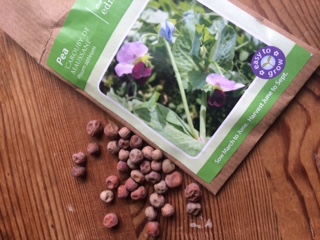
The strong urge to push on with the growing year only increases if you have a greenhouse at your disposal: surely – we think – I can get everything going nice and early and be ahead of the game? Be harvesting when everyone else is just planting out? Have ripe tomatoes in June? We might think that with our short summer seasons there is nothing to be lost and everything to be gained by sowing everything early, and I am already spotting tomato seedlings on windowsills. But I know that these little seedlings are most likely doomed to failure. For there really is such a thing as sowing too early, and there is a natural order in which to sow. It is not – for instance – yet the time for sowing tomatoes, courgettes, winter squash, or any of those more luxuriant vegetables that we most dream of succeeding with. We like to make fools of ourselves over them though. If sown now even the temperature in a greenhouse will be too cold for them. On a windowsill inside the house they will be warm enough but not have enough light, but they will grow puppyishly fast anyway, bounding away, stretching halfway up the window and begging to be let outside while there is still a chance of tomato-slaying frost in the air, and even of snow on the ground. If you have a heated greenhouse or a conservatory then you may well get away with it, and have early crops to show for it, but most of us have to make do with the increase in temperature afforded by a pane of glass and perhaps an insulating layer of bubble wrap. It is not to be sniffed at, but it wont hold back the frost. No, most of us have to bide our time, and do everything in the correct order and at the right moment. We don’t even look at the seed packets of those glamour pusses until the end of the month, or ideally even later.
This is not to say that you shouldn’t be sowing. There is plenty to be getting started with in early March, but they are not necessarily the most glossy and beautiful of vegetables, and so are more likely to be overlooked. In a cold greenhouse now you can be looking to next winter, and sowing your Brussels sprouts. It’s not the most exciting prospect when you have only recently finished off last year’s crop, but by sowing your own you can try out some more unusual varieties such as deep purple ‘Red Ball’ from Suttons or even ‘Kalettes’, the purposely blown ‘flower sprouts’, from www.simplyseed.co.uk. Once germinated and grown on you will need to pot them on until they are big enough to be planted out, ideally in mid- to late spring, and then protect them from cabbage white butterflies and other attacks under brassica nets, but they will repay the trouble by producing all next winter. Cabbage and celeriac, leeks, lettuce and peas can all go in now. The peas should be early varieties, which better cope with colder temperatures and soils. Try ‘Kelvedon Wonder’, ‘Douce Provence’ and ‘Early Onward’, and mange tout ‘Carouby de Mausanne’. If sowing lettuce you would be wise to stick to winter varieties for now, which are hardier and can cope perfectly well with the low temperatures. Try sweet and crunchy cos type ‘Winter Gem’, ‘Navara’ a dark purple, oak-leaved type lettuce, or ‘Valdor’, a soft-leaved butterhead type that sown now will be ready for cutting in spring, and is one of the hardiest in the case of a late cold snap. There is plenty to be done to make use of that urge to sow.


